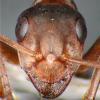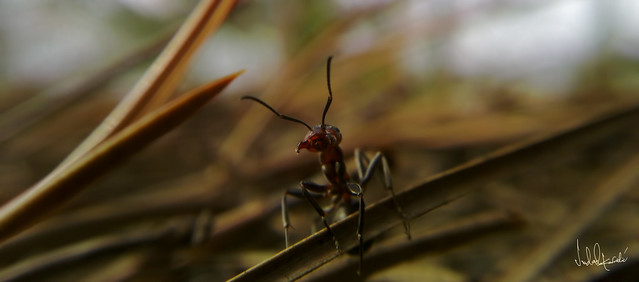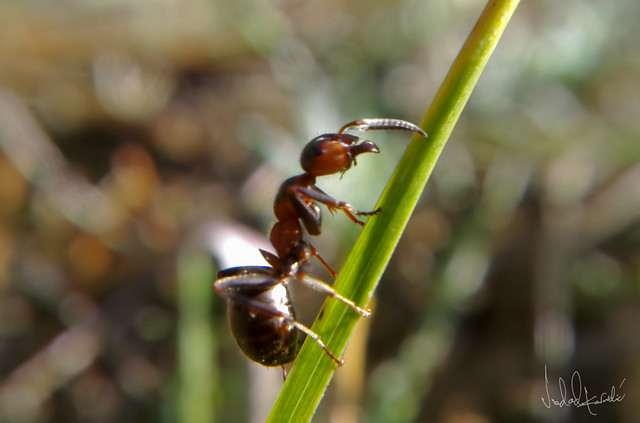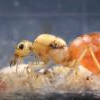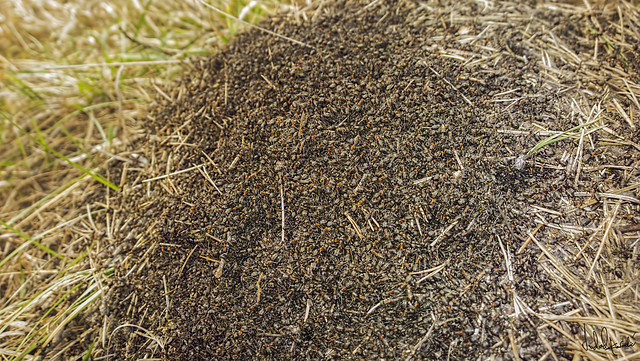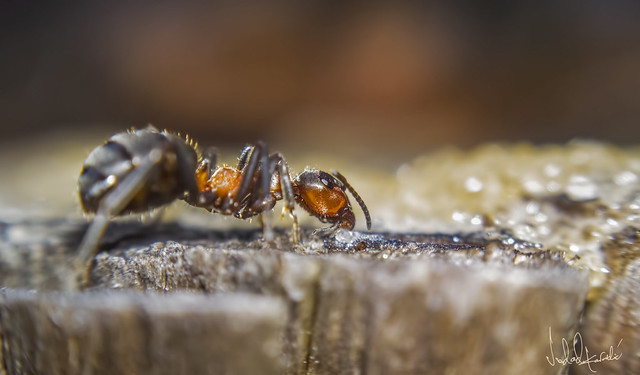Well, lately, my focus is on Formica genus, especially on sensu stricto et raptiformica groups.
Most common species around here is Formica sensu stricto rufa pratensis var. nigricans.
First available use of Formica rufa pratensis nigricans is by Emery, 1909.
Name origin: Formica lat., ant; pratensis lat., meadow; nigricans from nigra lat. black or dark.
However, some scientists disagree with idea that this is new species, so it's officially called Formica sensu stricto pratensis.
Key differences between F. pratensis et F. nigricans are pilosity, color and behavior. For example, F. pratensis is more common in north Europe and their number decreases further on south while F. nigricans are rare in north and their number increases to south of Europe.
F. nigricans is more hairy, they have something like eyebrows on top of their heads, hairs are long and they can be commonly confused by F. lugubris. Actually, only difference between F. lugubris et F. nigricans / pratensis is in location. F. lugubris is upland type of ant while F. nigricans / pratensis are lowland types of ants.
F. nigricans is darker than it's sister F. pratensis and smaller specimens can be completely brown (dark), like F. cinerea/balcanina.
Literature says that both species (F. pratensis et nigricans) can be found in same nests in central Europe. F. pratensis is monogynous or oligogynous (rare) and monodomous while F. nigricans is rather polygynous or olygogynous and polydomous just like it's upland sister.
On dead specimens is hard to see any difference without microscopic / dna identification because to see differences it's needed to see behavior of whole colony.
Like most of rufa group ants, they are hunters too. They will hunt from wasps to other ants, especially alates.
When they hunt other winged insects, first target is head, if they can not reach head, they will try to cut wings off until backup is there. They will spray acid easily, they are fearless and they have great sight.
They are only two species of European F. s.str. that can have two nuptial flights per season which can develop two separated generations of alates (one in spring and other in autumn).
This type of strict wood ants are known raider of F. cunicularia et cinerea/balcanina.
Queens are easily recognizable by pilosity on their gasters.
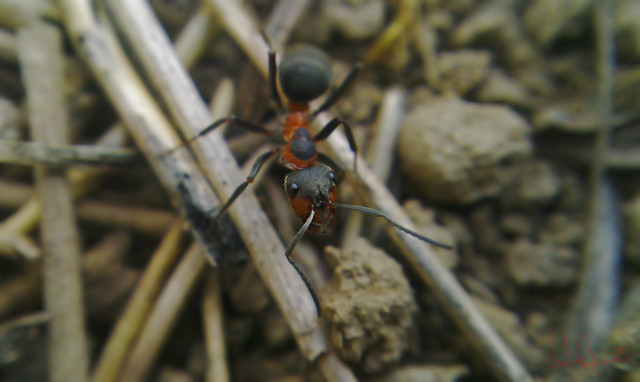
(Formica pratensis var. nigricans worker)

(Formica pratensis var. nigricans queen and workers in background)
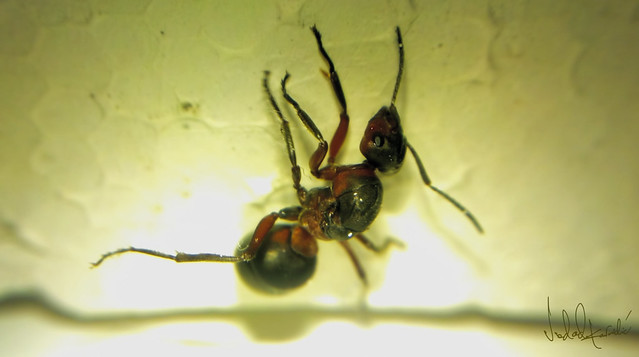
(Formica pratensis var. nigricans queen)
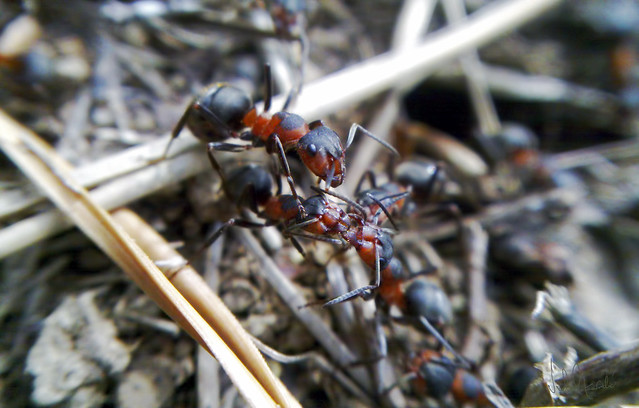
(Formica pratensis var. nigricans workers)
Today I had to visit remote colonies and it was really nice to see them active at +7C.
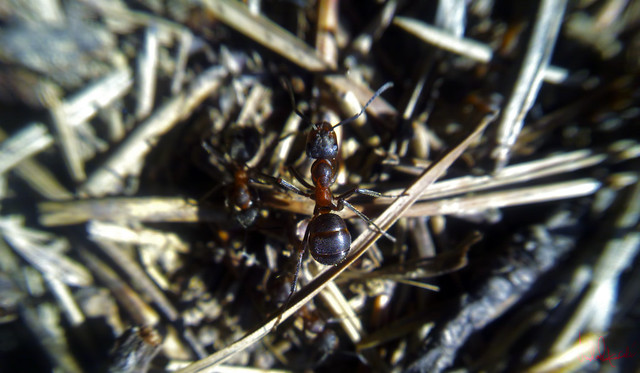
(Formica pratensis var. nigricans workers)
Sources:
- Phil a.k.a. lusatica
- bwars.com
- prof. dr. I. Petrov
- Seifert B. 1992 - Formica nigricans Emery, 1909 - an ecomorph of Formica pratensis...
- C. A. Collingwood 1979 - The Formicidae (Hymenoptera) of Fenoscandia and Denmark






